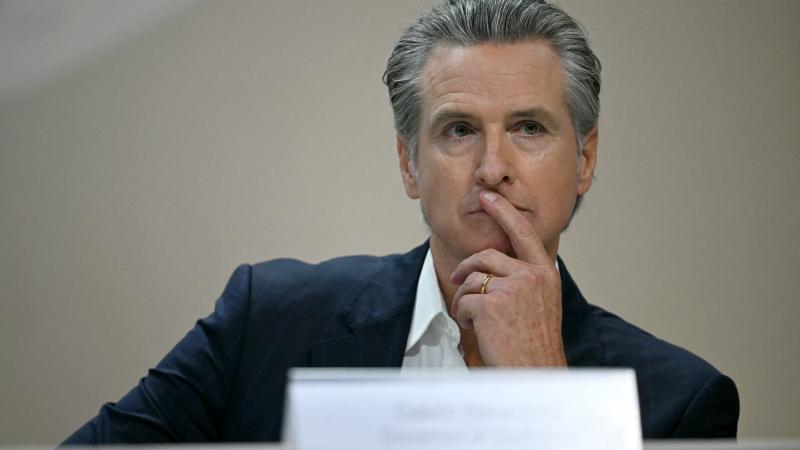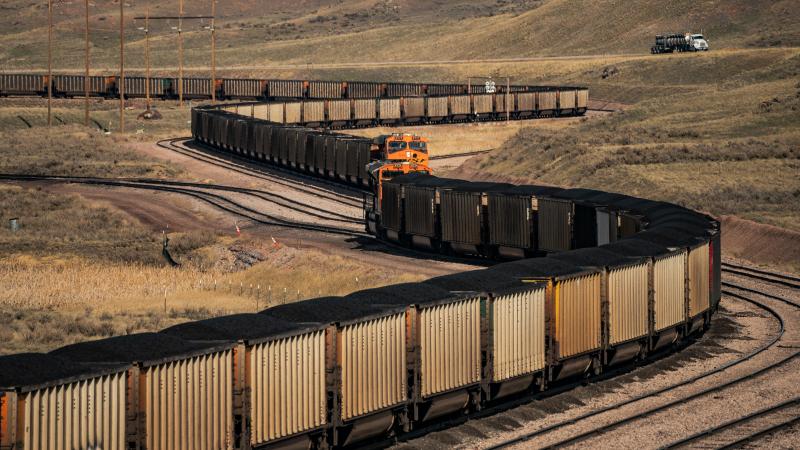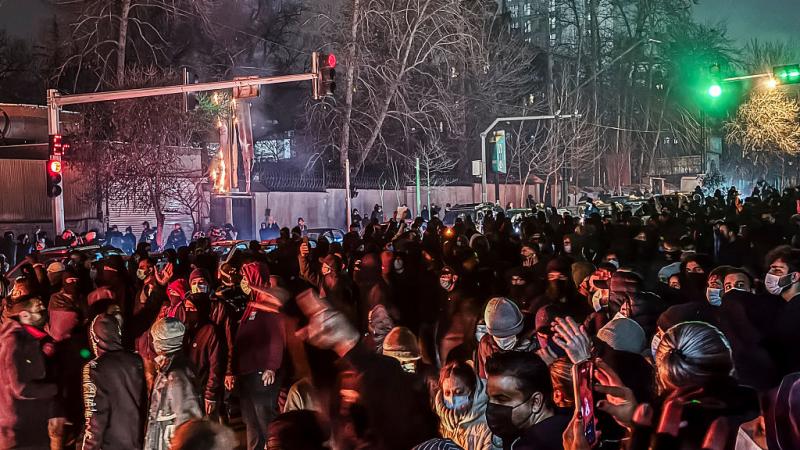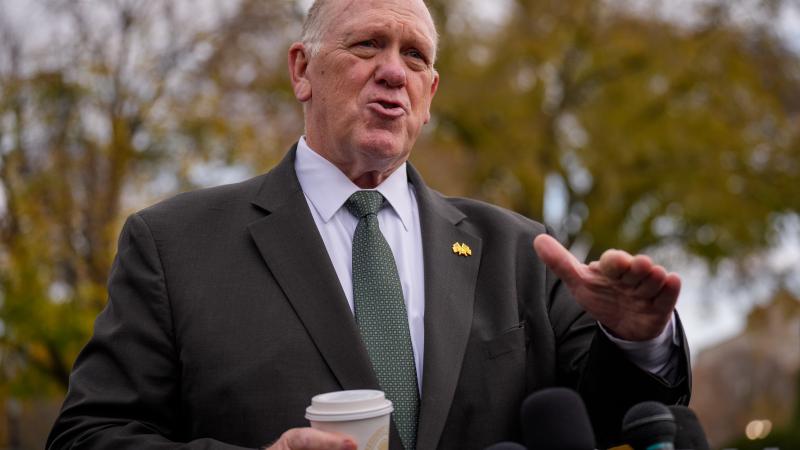Experts say 50 million miles of new power lines needed for green energy, and that may be impossible
Some estimates say the U.S. needs to build over 700,000 miles of transmission lines to reach its own renewable energy goals: enough to circle the globe 2,000 times. A 700-mile transmission line starting in Wyoming cost $3 billion and took 15 years to clear regulatory permits.
It's one thing to try and replace fossil fuels with wind and solar power, but experts are saying the generation of power is only half the battle, and that the problems in getting that power to Americans may be insurmountable.
A new report from the International Energy Agency (IEA) concludes that the size of the global electricity grid will need to double by 2040, in order to reach global emission reductions targets in line with the Paris Agreement.
That means, the IEA says, the world will need to refurbish or add 50 million miles of new transmission lines within 17 years — the equivalent of circling the equator more than 2,000 times.
The IEA estimates that global investments in transmission capacity will need to double to $600 billion per year by 2030 in order to reach that goal.
Energy expert, podcaster, and author Robert Bryce told Just The News the agency’s estimates suggest enormous challenges ahead to reach the goals they are proposing. “It’s easy to talk about building transmission, but it's incredibly hard to do,” Bryce said.
As mining expert and Utah-based lawyer B.F. Randall explains, electricity has a property that makes it more of a service than a commodity. It has to be produced almost the moment it's consumed.
Wind and solar provide energy intermittently, according to when the wind is blowing or the sun is shining, which may or may not align with demand.
Solar production, for example, diminishes in the evening when demand starts to climb, which is why the operators of the Texas grid this summer requested people conserve during those hours. Wind energy typically fails at the same time.
While some storage systems, such as batteries and pumped storage, can store energy for later use, they are very expensive, especially when bridging long durations when wind or solar energy may not be available.
The idea of renewable energy may be good, but the execution is problematic. In order to run the grid reliably with many wind and solar farms, it has to be able to transfer electricity from wherever it’s produced at any given moment to wherever it's needed. That means a lot of transmission lines.
The Biden administration announced last week $3.5 billion for 58 projects across the country, which includes billions for transmission projects. “Today’s announcement represents the largest-ever direct investment in critical grid infrastructure, supporting projects that will harden systems, improve energy reliability and affordability—all while generating union jobs for highly skilled workers,” U.S. Department of Energy Secretary Jennifer Granholm said in a statement.
There are various studies estimating what it would take for the U.S. to meet its own renewable energy goals while satisfying the world’s highest demand for energy.
A 2020 Princeton University study on reaching "net zero" in America estimates that transmission systems in the U.S. will need to expand by 60% by 2030 and may need to triple by 2050. Net zero means "cutting greenhouse gas emissions to as close to zero as possible, with any remaining emissions re-absorbed from the atmosphere, by oceans and forests for instance," explains the United Nations' "Climate Change" webpage.
The U.S. currently has about 240,000 miles of high-voltage transmission lines. That doesn’t include 5.5 million miles of local distribution lines. If the U.S. were to triple the miles of high-voltage transmission lines, that would equal about 720,000 miles of transmission that need to be built.
According to Xcel Energy Transmission, a company specializing in constructing and maintaining power lines, an overhead high-voltage power line costs approximately $2 million to $2.5 million. Based on the lower estimate, 720,000 miles of power lines will require $1.44 trillion in investment.
Bryce explains his Substack article that studies looking at meeting transmission capacity expansion needs in the U.S. don’t often consider the feasibility of the transmission build out goals.
As an example, Bryce points to a Lawrence Berkeley National Lab paper, which found, based on 2022 data, that American consumers could save hundreds of millions of dollars with expanded transmission capacity.
But the authors don’t calculate the cost of the planning and construction of the theoretical transmission lines. Instead, the information is explained as a “simple concept that transmission enables a lower cost set of generators to meet load than would otherwise be available,” says Bryce.
In an interview with Just The News, Bryce said that there are land-use conflicts, labor shortages, and transformer shortages that make it difficult to get a high-voltage transmission line built. “All of these add complexity and cost to building these projects,” he said.
A transmission line running hundreds of miles will possibly cross a combination of state lines, federal and state lands, local jurisdictions, tribal lands, and private lands. All of those require different regulations and approval processes, and ironically, often run into opposition from environmentalists. Getting all the permits and going through lawsuits can take years.
The $3 billion, 700-mile Transwest Express transmission line, which will connect a large wind farm in Wyoming to consumers in other states, took 15 years to get the approval for construction to begin. The construction is estimated to take another five years.
Lee Cordner, an electrical engineer who has 50 years of experience in the power sector, said on Bryce’s “Power Hungry” Podcast that the tribal governments can be “pretty obstructionist” when it comes to getting rights of way. “They don’t like it when you show up and say, ‘I think we’re going to have to take some of your land.’…They’ve been through that, and they don’t like it,” Cordner said.
With 326 land areas in the U.S. that are administered as federal Indian reservations, the proposed transmission buildout will have to cross a lot of these lands.
Another problem is getting the skilled labor needed to build the projects. Cordner said a lineman's work involves power lines carrying electricity of up to 500,000 volts, making it dangerous work, and it can take several years to train someone.
“These lineman are tough hombres,” Bryce said, adding that all across the country, utilities struggle to fill open lineman positions. “It takes a very dedicated person who likes physical work, likes being outdoors, and then likes the challenge of a job that is physically and technically demanding,” Bryce said.
Then, there is the always-present challenge of supply chains. All the copper, iron and other minerals have to be mined and processed. Besides the power lines themselves, there is the associated equipment, like transformers, which step up and step down voltage.
Bryce said the transformers needed for bulk power delivery on high-voltage transmission lines are usually custom built, and the wait times can be two or three years. “It is another aspect of the infrastructure challenge that is complex and costly,” Bryce said.
Meredith Angwin, a chemist and author of “Shorting The Grid,” told Just The News that the challenges are likely insurmountable. Blackouts are going to become more common as the U.S. tries to power an energy-hungry grid on more and more intermittent resources. At the same time, electricity rates are going to go up as the cost of all the infrastructure build out gets passed down to consumers.
“It's very close to impossible to run a modern civilization on wind and solar. And so it isn't going to happen,” Angwin said. She added that besides the technical challenges to this massive build out of transmission lines, there are the environmental impacts that aren’t being considered. All those steel towers will affect wildlife and the natural landscape.
“The question is going to be, how much damage to the environment before people say, ‘Oh, I guess we better not do this,’” she said.
Angwin said her optimistic side thinks that, when all the technical and environmental problems come to the forefront of the conversation, public opinion will likely turn against the whole idea of going completely green.
The Facts Inside Our Reporter's Notebook
Links
- new report from the International Energy Agency
- Paris Agreement
- more of a service than a commodity
- requested people conserve during those hours
- Wind energy typically fails
- pumped storage
- especially when bridging long durations
- The Biden administration announced
- worldâs highest demand for energy
- A 2020 Princeton University study
- the United Nations' "Climate Change" webpage
- currently has about 240,000 miles
- According to Xcel Energy Transmission
- donât often consider the feasibility
- run into opposition from environmentalists.
- Transwest Express transmission line
- said on Bryceâs âPower Hungryâ Podcast
- wait times can be two or three years
- Meredith Angwin
















